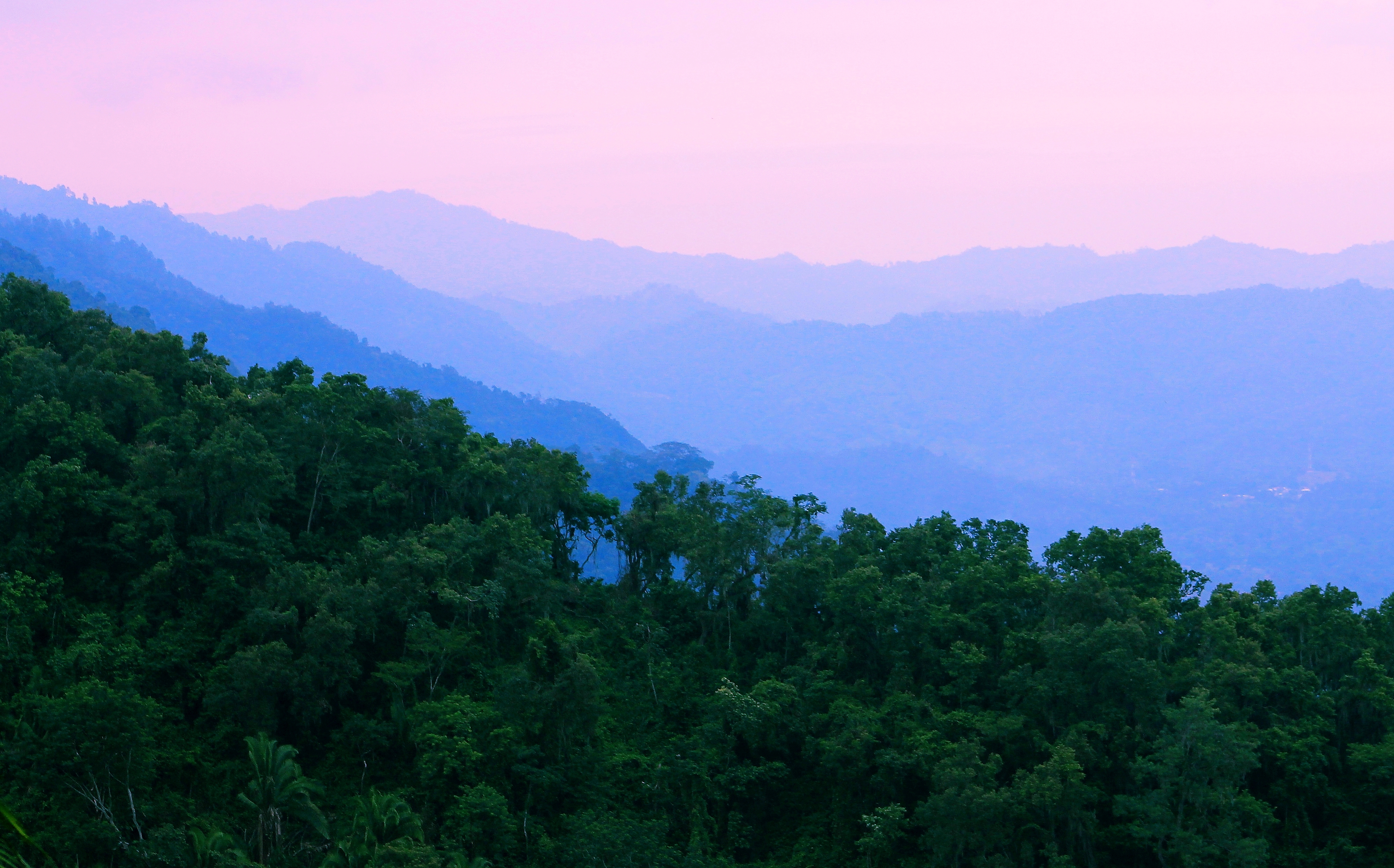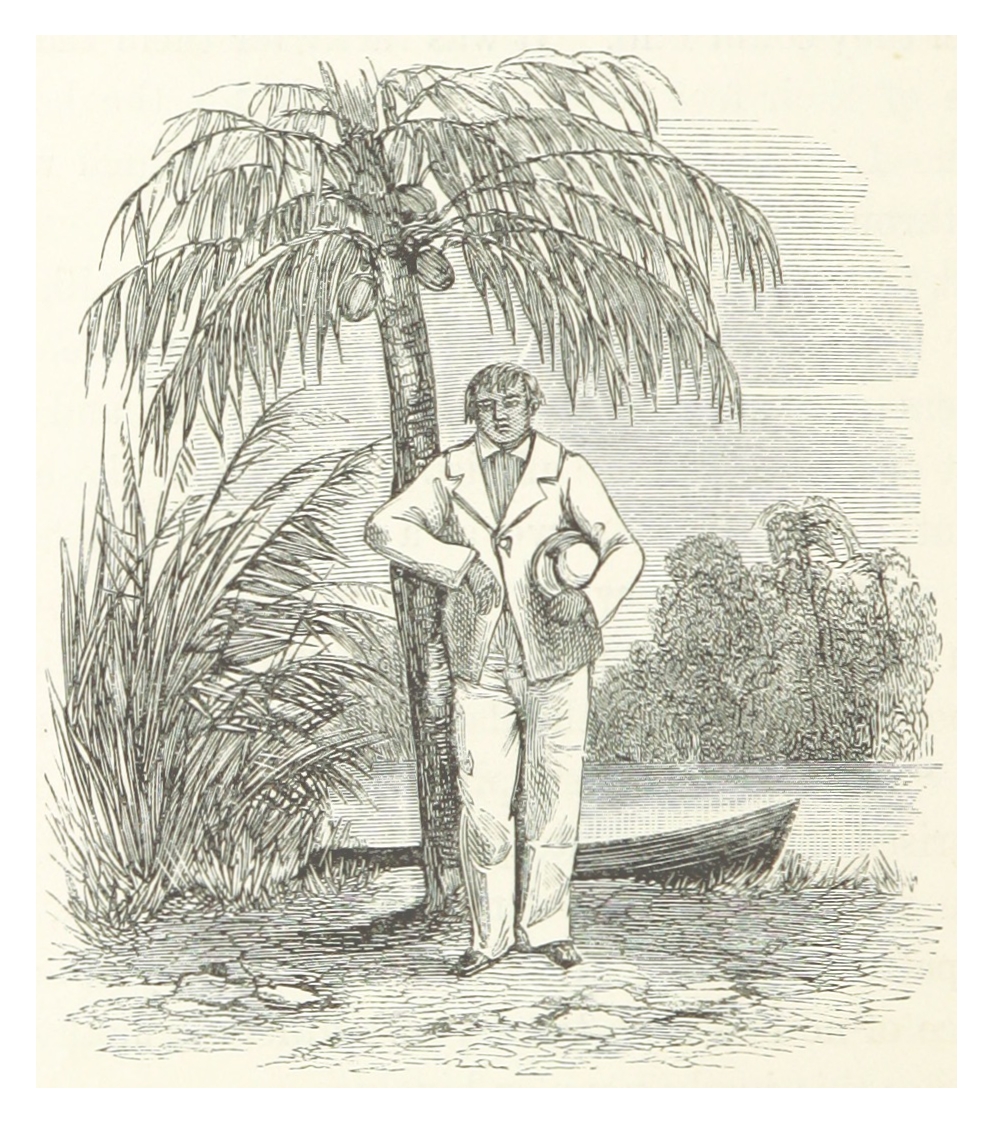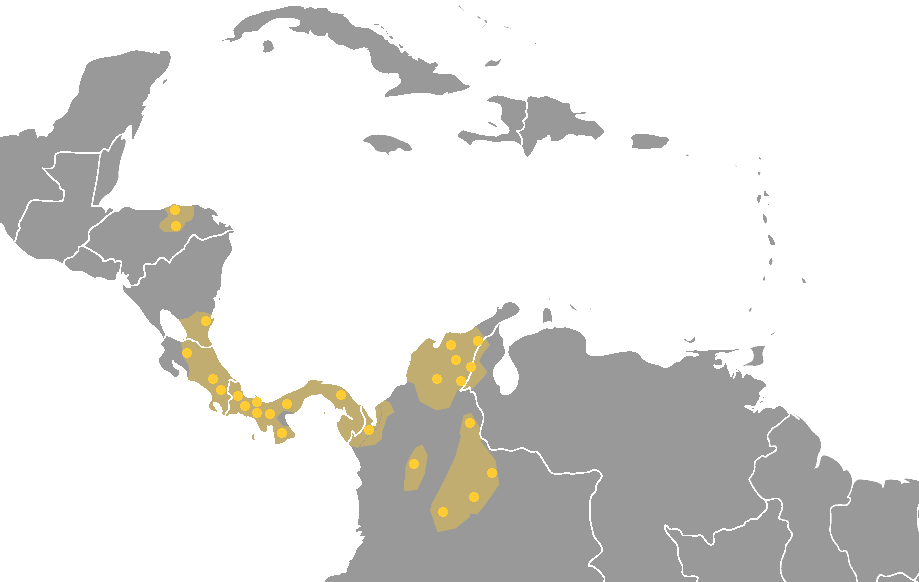|
Spanish Conquest Of Honduras
The Spanish conquest of Honduras was a 16th-century conflict during the Spanish colonization of the Americas in which the territory that now comprises the Honduras, one of the seven states of Central America, was incorporated into the Spanish Empire. In 1502, the territory was claimed for the king of Spain by Christopher Columbus on his Fourth voyage of Columbus, fourth and final trip to the New World. The territory that now comprises Honduras was inhabited by a mix of Indigenous peoples of the Americas#Honduras, indigenous peoples straddling a transitional cultural zone between Mesoamerica to the northwest, and the Intermediate Area to the southeast. Indigenous groups included Maya peoples, Maya, Lenca people, Lenca, Pech people, Pech, Miskito people, Miskitu, Mayangna people, Mayangna (Sumu), Jicaque people, Jicaque, Pipil people, Pipil and Chorotega people, Chorotega. Two indigenous leaders are particularly notable for their resistance against the Spanish; the Maya leader Sicumb ... [...More Info...] [...Related Items...] OR: [Wikipedia] [Google] [Baidu] |
Spanish Colonization Of The Americas
The Spanish colonization of the Americas began in 1493 on the Caribbean island of Hispaniola (now Haiti and the Dominican Republic) after the initial 1492 voyage of Genoa, Genoese mariner Christopher Columbus under license from Queen Isabella I of Castile. These overseas territories of the Spanish Empire were under the jurisdiction of Crown of Castile until the last territory was lost in Spanish–American War, 1898. Spaniards saw the dense populations of indigenous peoples of the Americas, Indigenous peoples as an important economic resource and the territory claimed as potentially producing great wealth for individual Spaniards and the crown. Religion played an important role in the Spanish conquest and incorporation of indigenous peoples, bringing them into the Catholic Church peacefully or by force. The crown created civil and religious structures to administer the vast territory. Spanish men and women settled in greatest numbers where there were dense indigenous populations ... [...More Info...] [...Related Items...] OR: [Wikipedia] [Google] [Baidu] |
Francisco De Montejo
Francisco de Montejo (; 1479 – 1553) was a Spanish conquistador in Mexico and Central America. Early years Francisco de Montejo was born about 1473 to a family of lesser Spanish nobility in Salamanca, Spain. He never documented his parentage during his lifetime but his father was probably Juan de Montejo. His mother is unknown but her surname may have been Téllez. He had a brother, Juan, who served with him in the New World and a sister, Maria, whose son Francisco de Montejo would become an important conquistador in Yucatán. In 1513, Montejo joined an expedition being organized in Seville under the leadership of Pedrarias Davila who had received a royal appointment to govern Castilla de Oro, a new Spanish colony in Central America. Montejo was sent on ahead to Santo Domingo to recruit additional men for the colony. Later, Pedrarius sent him on an unsuccessful expedition to the region that would later become Nueva Granada. Montejo became disillusioned with opportunitie ... [...More Info...] [...Related Items...] OR: [Wikipedia] [Google] [Baidu] |
Gil González Dávila
Gil González Dávila or Gil González de Ávila (b. about 1480 – 21 April 1526) was a Spanish conquistador and the first European to explore present-day Nicaragua. Early career González Dávila first appears in historical records in 1508, when he received a royal commission to examine accounts and tax records of estates. He probably traveled soon afterward to Santo Domingo for his assignment, and to establish himself. In 1511, from Valladolid, Spain, he was given the title of Accountant of Hispaniola or contador. By 1514, the Hispaniola treasury staff put in place by Ferdinand, included Gil, who had replaced Cristóbal de Cuéllar as contador, Miguel de Pasamonte, who had been named treasurer general of the Indies in April 1508, and Juan Martinez de Ampies as factor. His enhanced position enabled him to become a teacher and he soon had an estate with over 200 Indian slaves. In 1518, González delivered a report to Charles V which was highly critical of the colonial man ... [...More Info...] [...Related Items...] OR: [Wikipedia] [Google] [Baidu] |
Mayangna People
The Mayangna (also known as Ulwa, Sumu or Sumo) are a people who live on the eastern coasts of Nicaragua and Honduras, an area commonly known as the Mosquito Coast. Their preferred autonym is Mayangna, as the name "Sumo" is a derogatory name historically used by the Miskito people. Their culture is closer to that of the indigenous peoples of Costa Rica, Panama, and Colombia than to the Mesoamerican cultures to the north. The Mayangna inhabited much of the Mosquito Coast in the 16th century. Since then, they have become more marginalized following the emergence of the Miskito as a regional power. Distribution The Mayangna today are divided into the Panamahka, Tawahka and Ulwa ethno-linguistic subgroups. They live primarily in remote settlements on the rivers Coco, Waspuk, Pispis and Bocay in north-eastern Nicaragua, as well as on the Patuca across the border in Honduras and far to the south along the Río Grande de Matagalpa. The isolation of these communities has allowed the Mayagn ... [...More Info...] [...Related Items...] OR: [Wikipedia] [Google] [Baidu] |
Miskito People
The Miskitos are an Afro-Indigenous ethnic group in Central America. Their territory extends from Cabo Camarón, Cape Camarón, Honduras, to Río Grande de Matagalpa, Nicaragua, along the Mosquito Coast, in the Western Caribbean zone. The Miskito people are descendants of shipwrecked and escaped enslaved West/Central Africans and Indigenous Hondurans and Nicaraguans. Majority speak the Miskito language and Miskito Coast Creole. Most also speak other languages, such as Spanish language, Spanish, English language, English, and German language, German. Spanish is the language of education and government, but some families educate their children in English, German, or Miskito. Miskito Coast Creole, an English-based creole language, came about through frequent contact with the British for trading, as they predominated along this coast from the 17th to the 19th centuries. Many Miskitos are Christians. A 1987 peace agreement afforded them land rights over traditional lands. However, des ... [...More Info...] [...Related Items...] OR: [Wikipedia] [Google] [Baidu] |
Maya Peoples
Maya () are an ethnolinguistic group of Indigenous peoples of the Americas, Indigenous peoples of Mesoamerica. The ancient Maya civilization was formed by members of this group, and today's Maya are generally descended from people who lived within that historical region. Today they inhabit southern Mexico, Guatemala, Belize, and westernmost El Salvador, Honduras, and the northernmost Nicaragua. "Maya" is a modern collective term for the peoples of the region; however, the term was not historically used by the Indigenous populations themselves. There was no common sense of identity or political unity among the distinct populations, societies and ethnic groups because they each had their own particular traditions, cultures and historical identity. It is estimated that seven million Maya were living in this area at the start of the 21st century. Guatemala, southern Mexico and the Yucatán Peninsula, Belize, El Salvador, western Honduras, and northern Nicaragua have managed to ma ... [...More Info...] [...Related Items...] OR: [Wikipedia] [Google] [Baidu] |
Intermediate Area
The Intermediate Area is an archaeological geographical area of the Americas that was defined in its clearest form by Gordon R. Willey in his 1971 book ''An Introduction to American Archaeology, Vol. 2: South America'' (Prentice Hall: Englewood Cliffs, NJ). It comprises the geographical region between Mesoamerica to the north and the Central Andes to the south, including portions of Honduras and Nicaragua and most of the territory of the republics of Costa Rica, Panama and Colombia. As an archaeological concept, the Intermediate Area has always been somewhat poorly defined. Because it was not home to ancient state societies but was predominated by early chiefdoms at the time of the Spanish conquest, it was sometimes regarded as a kind of cultural backwater that contributed little to the emergence of Pre-Columbian civilization in the New World The term "New World" is used to describe the majority of lands of Earth's Western Hemisphere, particularly the Americas, and sometim ... [...More Info...] [...Related Items...] OR: [Wikipedia] [Google] [Baidu] |
Mesoamerica
Mesoamerica is a historical region and cultural area that begins in the southern part of North America and extends to the Pacific coast of Central America, thus comprising the lands of central and southern Mexico, all of Belize, Guatemala, El Salvador, and parts of Honduras, Nicaragua and northwestern part of Costa Rica. As a cultural area, Mesoamerica is defined by a mosaic of cultural traits developed and shared by its indigenous cultures. In the pre-Columbian era, many Indigenous peoples of the Americas, indigenous societies flourished in Mesoamerica for more than 3,000 years before the Spanish colonization of the Americas began on Hispaniola in 1493. In world history, Mesoamerica was the site of two historical transformations: (i) primary urban generation, and (ii) the formation of New World cultures from the mixtures of the indigenous Mesoamerican peoples with the European, African, and Asian peoples who were introduced by the Spanish colonization of the Americas. Mesoameri ... [...More Info...] [...Related Items...] OR: [Wikipedia] [Google] [Baidu] |
Indigenous Peoples Of The Americas
In the Americas, Indigenous peoples comprise the two continents' pre-Columbian inhabitants, as well as the ethnic groups that identify with them in the 15th century, as well as the ethnic groups that identify with the pre-Columbian population of the Americas as such. These populations exhibit significant diversity; some Indigenous peoples were historically hunter-gatherers, while others practiced agriculture and aquaculture. Various Indigenous societies developed complex social structures, including pre-contact monumental architecture, organized city, cities, city-states, chiefdoms, state (polity), states, monarchy, kingdoms, republics, confederation, confederacies, and empires. These societies possessed varying levels of knowledge in fields such as Pre-Columbian engineering in the Americas, engineering, Pre-Columbian architecture, architecture, mathematics, astronomy, History of writing, writing, physics, medicine, Pre-Columbian agriculture, agriculture, irrigation, geology, minin ... [...More Info...] [...Related Items...] OR: [Wikipedia] [Google] [Baidu] |
New World
The term "New World" is used to describe the majority of lands of Earth's Western Hemisphere, particularly the Americas, and sometimes Oceania."America." ''The Oxford Companion to the English Language'' (). McArthur, Tom, ed., 1992. New York: Oxford University Press, p. 33: "[16c: from the feminine of ''Americus'', the Latinized first name of the explorer Amerigo Vespucci (1454–1512). The name ''America'' first appeared on a map in 1507 by the German cartographer Martin Waldseemüller, referring to the area now called Brazil]. Since the 16th century, the term "New World" has been used to describe the Western Hemisphere, often referred to as the Americas. Since the 18th century, it has come to represent the United States, which was initially colonial British America until it established independence following the American Revolutionary War. The second sense is now primary in English: ... However, the term is open to uncertainties: ..." The term arose in the early 16th ... [...More Info...] [...Related Items...] OR: [Wikipedia] [Google] [Baidu] |
Fourth Voyage Of Columbus
The fourth voyage of Columbus was a Spanish maritime expedition in 1502–1504 to the western Caribbean Sea led by Christopher Columbus. The voyage, Columbus's last, failed to find a western maritime route to the Far East, returned relatively little profit, and resulted in the loss of many crew men, all the fleet's ships, and a year-long marooning in Jamaica. It is deemed the first non-Amerindian discovery of mainland Middle America, and one of the first non-Amerindian, non- Norse discoveries of continental North America. Prelude Upon being released from prison on 17 December 1500, Columbus set about planning what he deemed would be 'his most significant, most profitable expedition yet.' The 1497 discovery of an eastern maritime passage to 'the opulent East,' by Vasco de Gama, had steeled Columbus's determination to find a shorter, more direct western route. Consequently, on 26 February 1502, Columbus requested licence to sail on a fourth voyage. Passage to the East, he ... [...More Info...] [...Related Items...] OR: [Wikipedia] [Google] [Baidu] |
Christopher Columbus
Christopher Columbus (; between 25 August and 31 October 1451 – 20 May 1506) was an Italians, Italian explorer and navigator from the Republic of Genoa who completed Voyages of Christopher Columbus, four Spanish-based voyages across the Atlantic Ocean sponsored by the Catholic Monarchs, opening the way for the widespread European Age of Discovery, exploration and colonization of the Americas. His expeditions were the first known European contact with the Caribbean and Central and South America. The name ''Christopher Columbus'' is the Anglicisation (linguistics), anglicization of the Latin . Growing up on the coast of Liguria, he went to sea at a young age and traveled widely, as far north as the British Isles and as far south as what is now Ghana. He married Portuguese noblewoman Filipa Moniz Perestrelo, who bore a son, Diego Columbus, Diego, and was based in Lisbon for several years. He later took a Castilian mistress, Beatriz Enríquez de Arana, who bore a son, Ferdinand ... [...More Info...] [...Related Items...] OR: [Wikipedia] [Google] [Baidu] |






